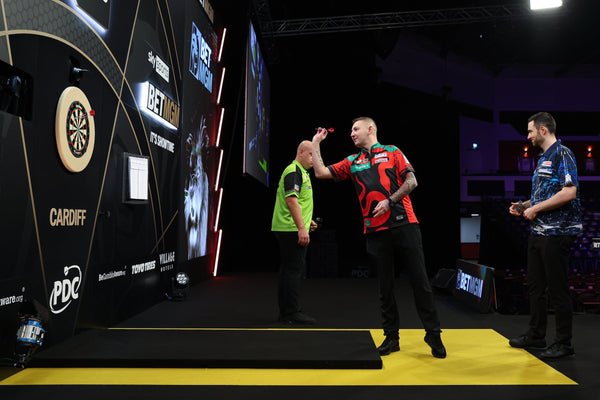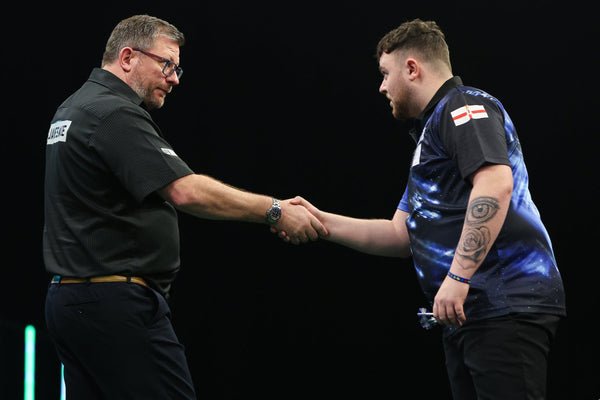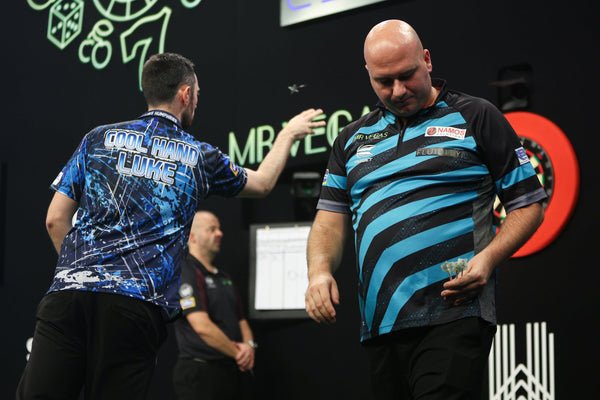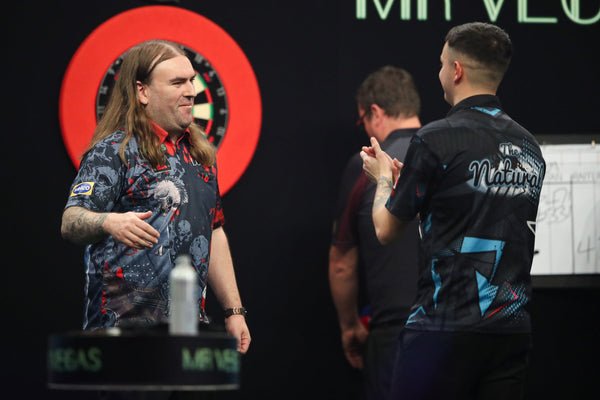Darts Etiquette: the rules that no one should adhere to when playing of darts.
Are you new to darts? Did you sign on to your local darts team, or considering entering a tournament? There is a chance that you do not be aware of what are the “unwritten rules” when it concerns the rules of conduct used by players in games.
Darts Corner has created a comprehensive list of some of most commonly used rules players adhere to when in competitive situations. These guidelines for open and league tournaments are designed to ensure that you are courteous and be a good sport towards your opponent. By following these guidelines, you will help you get your darts games started in the right way and will quickly gain respect from your fellow players.
Stay silent while your opponent throws
If you’ve been a darts fan while watching the best players in the world on TV, you’ll have witnessed the lively atmosphere that are created by crowds at games. It is rarely repeated in a local tournament or pub league, and most players anticipate the “best of order” when they toss.
It can be difficult to maintain a quiet environment in a place with a large number of people, however at a minimum, during your game, not talk or make any noise while your opponent is on the Oche. The most well-known instances of this occurred at the 2006 PDC World Darts Championship, in which Peter Manley was seen talking behind Adrian Lewis, who then left the stage midway through their quarter-final match on The Circus Tavern.
The World Darts Championship is nothing If it’s not the tense… Adrian Lewis had had enough of mind games together with Peter Manley in the 2006 tournament. It was a moment that will be remembered forever!
1 DAY TO GO!
Don’t use your darts when your opponent throws
In the same vein of being quiet when your opponent is on the oche, you should avoid making any noise using your darts when it’s no longer your turn. It is possible to make a sound by rattling three darts or by rubbing the darts’ flight by using your fingers.
Another way to make noise by using your darts you sharpen the darts with sharpeners for darts. It’s not unusual to need to sharpen your darts in the course of a game or to make repair work to them when you’ve broken your shaft or flight. It is advisable to make these repairs in a situation where your opponent isn’t throwing, unless you are able to make repairs without making noise that the opponent can detect.
Be aware of your surroundings from your adversary when they are at the Oche

If you’re participating in a tournament be sure that each player and you leave each other enough space to throw when it’s your turns to throw. This isn’t a problem for professional players in PDC tournaments, which are shown on TV, since you will see a mark out on the arena that is centered around the oche known as the ‘exclusion zone’. The players are not allowed to stand within the exclusion zone when their time to throw.
While you shouldn’t expect to see an “exclusion zone’ marked on the floor during play in your local competition or league You are required to maintain a distance from your opponent while they throw. A few players might lift their back leg when they throw, which means the most important thing to happen is for someone kick you due to not far enough behind them!
The stage of the Premier League has an ‘exclusion zone’ that players must be aware of whenever they are not allowed to throw
Take your darts off the board quickly
After you’ve completed your turn, ensure that you take your darts back in a timely fashion. While your opponent may not anticipate a Usain-Bult-like sprint towards the board to collect your darts, you must not be slowing down and make sure you get your way clear so that your opponents can throw in an appropriate period of time.
There are times when you hear commentators or players referring to the ‘rhythm’ or “pace of play’ in games. In general, players prefer to get into their own rhythm during games that will allow them to play their very best performance. If you slow down your stroll to retrieve your darts, you are likely to disturb your opponent, and may be seen as a violation of sportsmanship.
Touch your fists or shake hands with your opponent between the start and at the conclusion of the game.

Every match should be concluded by a shake or a touch of your fists in between you with your rival. It is an act of respect between two players prior to the start of the game, and also it is a show of respect after the match, to thank the winner and congratulate the losing player.
When you watch a match on television You will usually observe the two players standing on stage hug or shake hands after they’ve thrown their nine or six practice darts. The referee will call out to the crowd and then say “game on” to indicate that the game is about to start. It is when the players will greet each other before one players throws the first three darts of the game. The players will then repeat this salutation after the winning double is hit and the winner is declared.
James Wade and Josh Rock shake hands before the Grand Slam of Darts quarter-final match
Do not wait long to reach the oche to throw your throw
Similar to removing your darts from the table quickly You should also be careful not to extend the time required to reach the oche to throw. The practice of putting off throwing is not a good idea and could be interpreted as gameplay if it appears that you are be slowing down the game by attempting to slow it down.
Each player has their preferred pace and style of game, however it is not advisable to try and alter this to frighten your opponent. If you’re playing a slower opponent then speeding up your game will not increase their speed and the reverse is true. Slowing down your game when playing an athlete who is fast could affect your game, as you won’t be playing at the speed which you usually prefer.
Always walk back to the oche from the same side.

This is a rule that is not written down that often causes players to slip off, particularly if they are brand new to the game and in a competitive setting. If you watch darts on TV you’ll notice that players always turn their backs to the right after removing their darts off the board, and return to the oche and to the left. This is done for the benefit of television cameras. If the players were to walk back from the opposite side, they could stop the camera’s view of the player who is throwing. This is done to create a split-screen image of playing on left and the person who is throwing to the left.
Based on the conditions at the venue that you’re in You may discover that there is more space to the left than to the right. In this scenario, it might be agreed prior to the game that players shift toward the left following they have collected their darts. When this has been agreed upon it is best to adhere to this, and refrain from switching between the two sides since it could distract your opponent.
Rob Cross (right) walks back towards the oche after collecting his darts. The players will rotate to their left each time after removing their darts from the table so as to not block the camera on television that is focused on the player who is throwing
Make sure to flag any scoring conflicts using the marker when it’s your turn to throw
If you’re participating in a darts league, or an event in your area, likelihood is that you’ll have someone else marking your game on your behalf. The person you are referring to as a’marker’ (or the ‘chalker’) and they keep an eye on the scores of the player and you through an electronic scoreboard, tablet, whiteboard or an old-fashioned chalkboard.
There could be an issue with some of the scores not being correct like a dart that is in the triple 20 (worth 60 points) is being reported as single 20 (worth twenty points) when it’s hidden or is close to the wire that connects one and the other. It could have been an error in scoring in which the marker has not completed your score in a correct manner such as if you are playing single 14 and treble 12, that isn’t common and not a score which is added up often. If you have to declare an error in darts, the proper procedure is to wait until the opponent has thrown and it’s back to your turn, instead of interrupting the player’s turn by asking the marker regarding your score.
Don’t drink or drink with your opponent’s water or drink.
The players drinking the drink of their opponents is a thing that caught the attention of officials during the 2024 Belgian Darts Open, when Krzysztof Ratajski twice took a drink from Luke Littler’s bottle of water on stage (see the video further below). In PDC events that take place on stage, there are two tables. Each player has their own table for their darts case as well as other accessories, in addition to their own water bottles.
In a darts room that is crowded it is often difficult to determine which one is yours If you’re playing with a group it’s an excellent idea prior to your game to take note of where your opponent’s drink is located to ensure that nothing similar happens during the game.
Keep your distance from your opponent as they throw
It is crucial not to create any noise either verbally or through your darts while the opponent is throwing however, you should also remain still in front of them. You may be in a place with a worn flooring or floorboard which creates lots of noise as you move about when you play. Before playing it’s worth taking some time to consider the play conditions and determine if you have to be mindful while moving between throwing.
There have been instances at times during matches between the professional players on television where one player has accused another for making sounds behind him as they throw. This could include putting your feet onto the ground or making noises due to a creaky floorboard. It is recommended to be as calm as you can once you’ve gone back to the oche in order to avoid making noises that aren’t necessary.
If you bull up, take off your dart, if you already thrown your dart
A number of darts tournaments and leagues will follow the PDC’s rule regarding bulling up prior to the beginning of a game. To determine which player will throw first, players throw a dart in the bullseye. The player with the dart closest to the target is to be the winner. The rule of the PDC sees the first player to remove his dart off the table leaving a target in place for the next player and only the outer bullseyes and bullseyes will be registered.
The ruling was made after the infamous 2007 PDC World Darts Championship final between Phil Taylor and Raymond van Barneveld. The final was an instant-death phase and both players had to fight up to determine which would throw first in the final leg (see the video in the video below). Taylor started first and struck an outer bullseye. van Barneveld utilizing his dart as a marker in order to strike the target in order to take the throw and eventually win the sudden death leg in order to be the winner of the tournament. The tournament was later determined to be unfair advantage to van Barneveld to win the bull up because there was a marker to use Taylor’s dart, and hit the bullseye using his dart. Check out what rules your tournament or league operates under for the bull-up, so that you don’t fall foul of the rules in the moment it’s time to start playing.
If you have fans make sure they remain at a distance during your opponent’s throw
It’s a fairly simple one to understand If you’re playing in a game and you have supporters such as relatives or friends ensure that they remain silent while your opponent throws. This is especially important when playing in a local darts venue like an open or pub league tournaments, where noise could be distracting when it’s the turn of your opponent to throw.
The most important thing is not to gain a reputation in the world of darts for one who has a loud and unruly crowd of fans at their games. It is important that your players show respect to the game as well as your opponent by offering them the best of service while they’re at the orche.
If your opponent is able to hit an enormous checkout or nine-dart leg and you are congratulated, do so politely or subduedly.
As a continuation of the concept of respecting your opponent, it’s normal to recognize when they have a major checkout. It could be a 170 mark, it is the top number of checkouts in the game, or when players complete the perfect leg, and then completes the game with 501 nine darts.
In the middle of an event, players are able to be respectful to their opponents by letting them know they have an impressive shot by putting their fists in the air or a high-five or giving them a pat on the back. While this isn’t in any rules book, within the spirit of the game, players tend to behave positively when their opponent hits an impressive shot, however within they are able to conceal their anger that the shot is hitting the player and not against someone else!

Ryan Searle (left) is greeted with applause of Nathan Rafferty (right) and his rival Nathan Rafferty (right) after throwing a nine-dart slam leg at the 2023 Grand Slam of Darts
It’s game time!
You now know the rules and regulations in darts etiquette. It’s time to get on the oche and test your skills against the other players. If you’re new to the sport, adhere to the rules that are not written in this article and you’ll soon be considered an individual who is respectful of this game, and who plays in the manner it was intended to be played. Be considerate of your opponent as well as the game, and your darts experience will be a pleasant one for years to be!
If we’ve missed any of the ‘unwritten rules’ for darts, contact us and inform us through the Contact Us page or on our social media channels!


